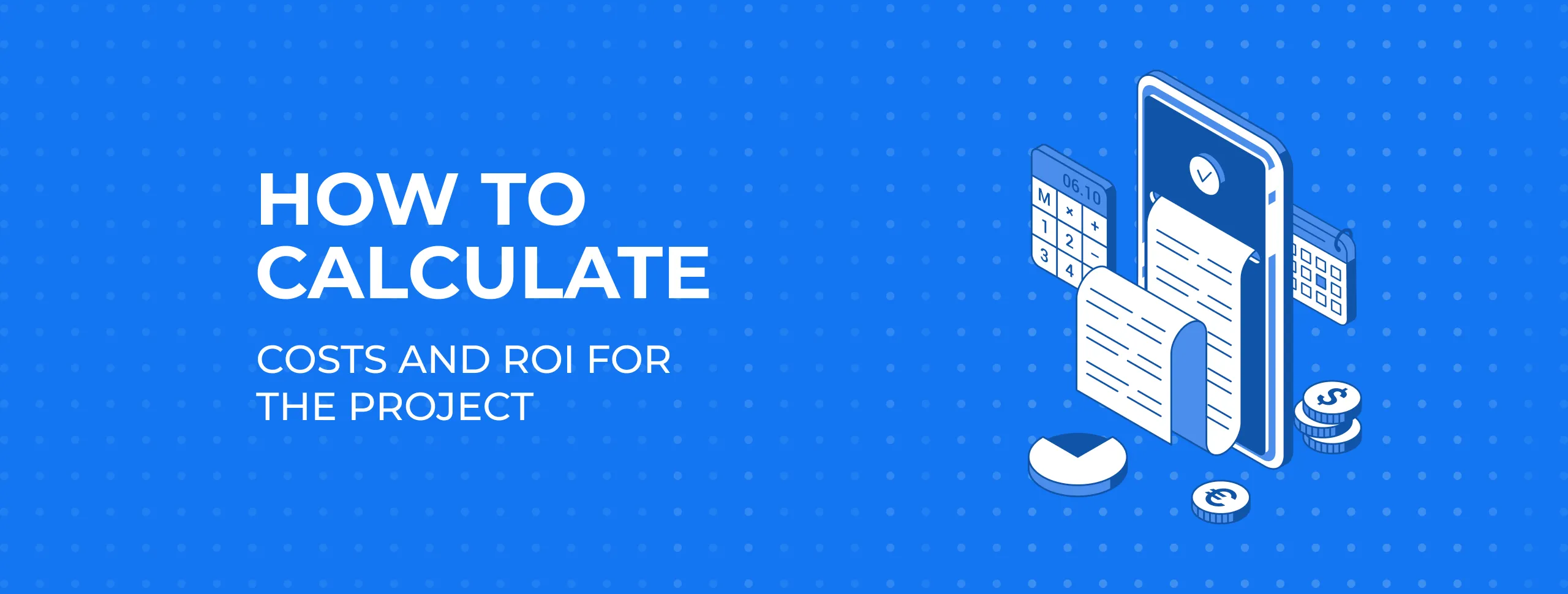
How To Calculate Costs and ROI for the Project

What is ROI, and what is it for?
Whether you are going to assess and improve a company's efficiency and profitability and thinking about some innovation to undertake or planning a completely new project to create, the key recommendation is to calculate return on investment (ROI). It is reasonable that investors and businesses want to escape future risk of losing money and be on the safe side to maximize returns, make their money work and multiply.
Return on investment (ROI) is a measure to understand cost-effectiveness of an investment, in other words, ROI gauges money you will spend and money you will gain to understand if the investment is worth it. It is a very popular and useful metric, besides, not too complicated to calculate.
ROI calculation
In order to determine ROI, you need to divide net profit by all your expenses and multiply by 100. They say it is better to count ROI in percentage terms. Or there is another way when we subtract all expenses from net profit and divide the result by expenses and once again multiply by 100. Percentages help to compare several projects immediately and decide in which one profit surpasses the costs. The higher the rate, the more potential investment is, but don’t forget about time - better to parallel them in one timeline.
If we are talking about some investments to be in the future, here anticipated ROI, or expected ROI, is taking place. The difficulty consists in predicting future revenue as precisely as possible. For that to happen, you need to assess the market size. Then figure out how much of it you can occupy with an eye to have a sales number forecast. Calculate total costs, calculate profit, always keep in mind the taxes. The process is easier when the project is already completed and there is accurate data. Here we are talking about actual ROI, which is the true return on investment.
Costs of the project, costs calculation
As previously mentioned, to estimate the feasibility and profitability of the project, you need to sum up all possible expenses. But it is quite challenging to do when you are a newcomer. Nevertheless, basic knowledge of the expenses budget will finally result in success.
There are several ways to count costs, and the first one is so-called the bottom-up estimating method.
First and foremost, this kind of cost estimate has an accuracy range of -5% to +10%, according to the Project Management Institute (PMI). But it will cost you a number of resources. The point is to divide the project into the work stages and calculate them separately. As a second variant, you can take a similar product and use the analogous estimating method. The third way is to call for help from experts. They have enough experience to set the costs.
Anyway, your project price will depend on:
- the complexity of a project,
- the development team size, and it’s composition,
- the development team experience,
- technical capacities,
- number of features.
With the aim of easing the cost calculations and not to be confused, Magora suggests implementing a discovery phase before starting work on the project.
Magora Discovery phase
One of the key factors that lead to success in business is thorough project planning.
In order to make smart decisions, management requires actual and exhaustive data. And furthermore, possessing detailed information gives advantages over unexpected moments such as delay in timeframe or variances between actual and approved budget.
So, in Magora we place special emphasis on the discovery phase, in other words, pre-project investigation that helps to clarify future work of software products. The discovery phase meets different needs according to the customer’s demands from the project scope till designing questions. High-quality project outline avoids potential risks, weaknesses and inefficient solutions. Magora team adapts to various levels of plan elaboration because for some projects concluding remarks are needed while for others a rigorous detailed analysis will be highly recommended. With Magora the discovery phase software development will be a predictable and easy-to-understand process. It is necessary to take into account an expected interaction of staff and clients with the new app and make it absolutely supportive.





